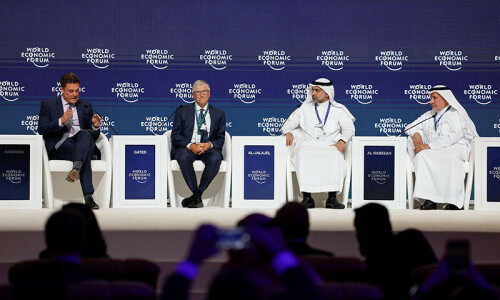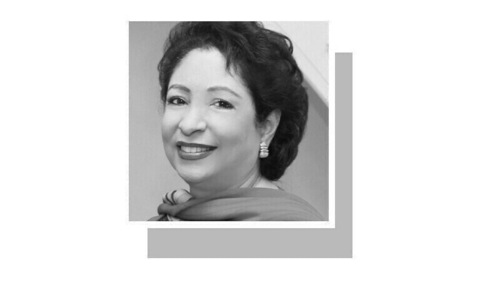The development of the Islamic Pricing Benchmark is prompted by the substantial growth of the global Islamic financial sector, nearing $4 trillion in assets, with Pakistan surpassing the Rs8tr assets milestone.
A common query in Islamic finance revolves around using conventional benchmarks, such as the Karachi Interbank Offered Rate (Kibor) or the London Interbank Offered Rate (Libor), in pricing Islamic finance transactions or Sukuk. It’s often erroneously believed that employing conventional benchmark rates for rental calculations or profit determination in Islamic financing contracts renders the transaction impermissible.
This inquiry gains significance amid Pakistan’s banking sector conversion following the Federal Shariat court’s decision, aiming to transition from an interest-based to a just and ethical Islamic banking system by 2027.
Additionally, concerns arise regarding the actions Islamic financial institutions will take post-conversion when conventional benchmarks cease to exist. There is strong advocacy within the Islamic finance community to shift away from conventional banking roots and devise a tailored benchmark reflecting Islamic finance’s unique values and requirements.
Islamic banks advocate exploring Sharia-based alternatives to conventional financial benchmarks to propel growth
Regulators also emphasise the need for benchmarks aligned with the economy, promoting positive economic impact and resilience against market manipulation, as seen in the case of Libor.
To comprehensively address the query above, we must analyse the issue across three dimensions: Sharia compliance, customer perception, and market competition.
From a Sharia compliance perspective, the majority opinion of Sharia scholars, along with the Bahrain-based Accounting and Auditing Organisation for Islamic Financial Institutions (AAOIFI) standards, permits the use of conventional benchmark rates in pricing Islamic transactions, provided that the transaction adheres to all Islamic contract requirements. These benchmark rates serve as a measure to calculate the return of a permissible transaction.
Scholars emphasise that transaction permissibility hinges on the mode of finance and procedural adherence rather than mere similarity to interest-based earnings. For instance, while offering an interest-based loan at 10 per cent is impermissible, earning a 10pc profit margin from a valid sale of raw materials to a factory is allowed. Conversely, utilising Islamic rates such as Zakat at 2.5pc or Ushr at 10pc to facilitate an interest-based loan remains impermissible under Islamic rules.
Furthermore, scholars strongly recommend that Islamic financial institutions refrain from determining profit in Islamic finance using conventional banking rates and benchmarks, even if permissible.
Instead, they advocate for exploring alternatives, urging Islamic banks to develop benchmarks rooted in Islamic banking markets or tied to genuine economic indicators. This underscores the continuous endeavour to elevate Islamic finance practices in alignment with Sharia objectives.
In 2011, Thomson Reuters, a notable entity in the financial sphere, unveiled the Islamic Interbank Benchmark Rate (IIBR) as a viable remedy, seeking to tackle apprehensions associated with interest-based benchmarks. The IIBR’s methodology entails input from a consortium of Islamic banks, ensuring the computation aligns with Sharia-compliant funding expenses.
Moving on, customer perception regarding benchmark usage is significant. From a behavioural economics standpoint, understanding the perception evoked using an interest-based benchmark is crucial.
Many customers still view Islamic banks relying on conventional benchmarks negatively, posing a barrier to the widespread adoption of Islamic finance. Introducing a new benchmark isn’t solely about adhering to regulations. It can also alleviate confusion for the general public and foster a positive perception of industry expansion.
A distinct benchmark can bolster stakeholders’ trust and differentiate Islamic financial product offerings. The State Bank of Pakistan has also recognised the necessity for a separate benchmark in its previous strategic plan for Islamic banking, aiming to bolster public confidence in the industry.
Finally, market dynamics and the competitive environment constitute the third aspect of the Islamic benchmark, prompting curiosity about potential deviations from conventional benchmarks.
Differences between Islamic and conventional benchmarks rely on factors like market dynamics, calculation methods, and other underlying elements such as economic correlations, the market share of Islamic banks, and the activity within the Islamic interbank market.
It is anticipated that markets permitting Islamic and conventional banking systems will closely align their benchmarks, whereas markets exclusively accommodating Islamic banking are expected to take a distinct course with their benchmark evolution.
Considering the discussion above, creating an Islamic pricing benchmark warrants substantial attention. To ensure the successful establishment and broader acceptance of such a benchmark, stakeholders must prioritise Sharia compliance, foster industry collaboration, maintain transparency in methodology, ensure widespread dissemination, and institute close monitoring within the Islamic finance community.
As the industry advances, the present moment presents a suitable time for policymakers, regulators, industry participants, and academics to convene under the guidance of Sharia scholars. Together, they can explore effective models for Islamic pricing benchmarks that will instil confidence and trust among customers and propel the growth of Islamic finance in Pakistan.
The writer is the Director of IBA Centre for Excellence in Islamic Finance.
Email: aasiddiqui@iba.edu.pk
Published in Dawn, The Business and Finance Weekly, April 29th, 2024















































